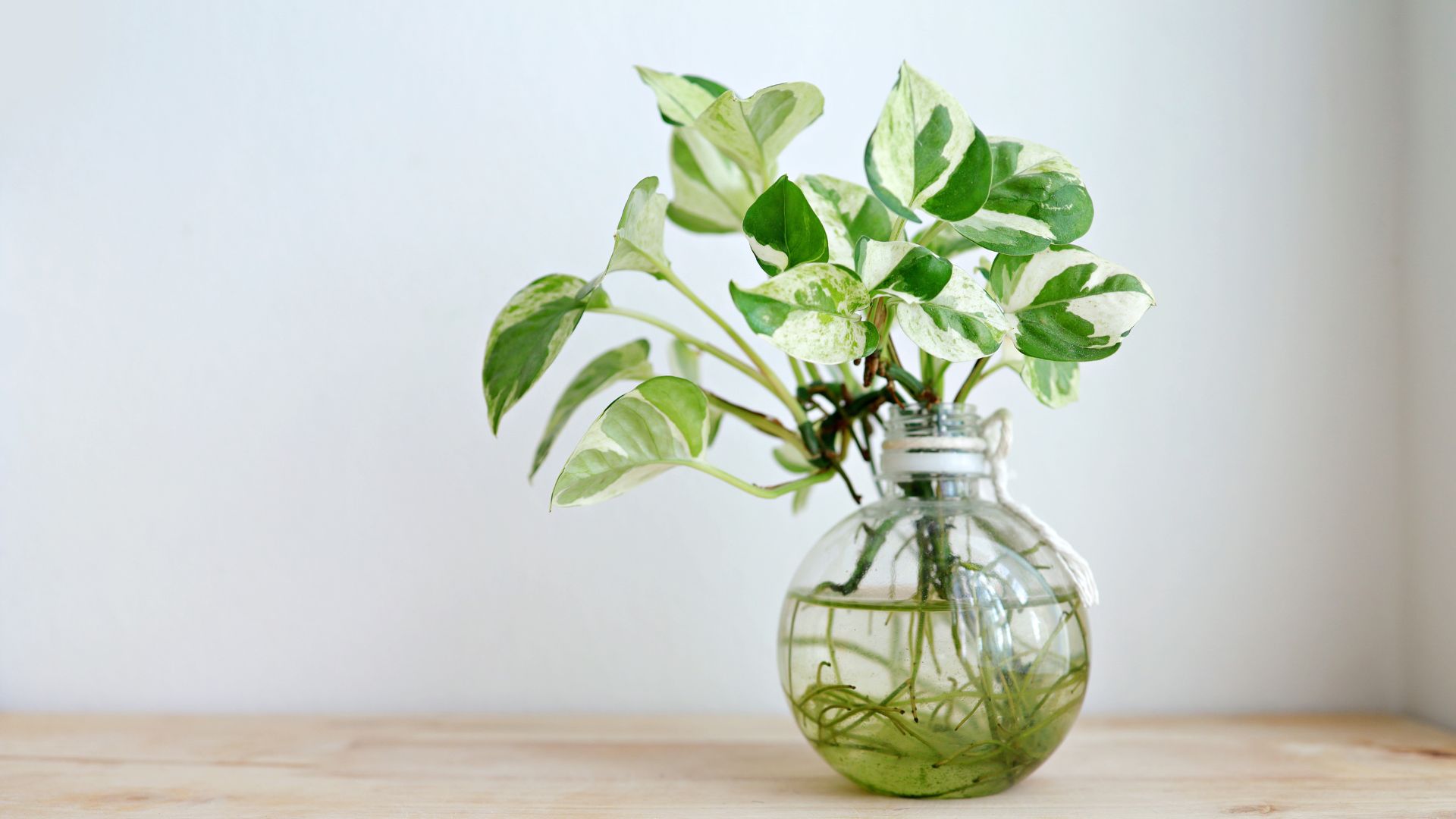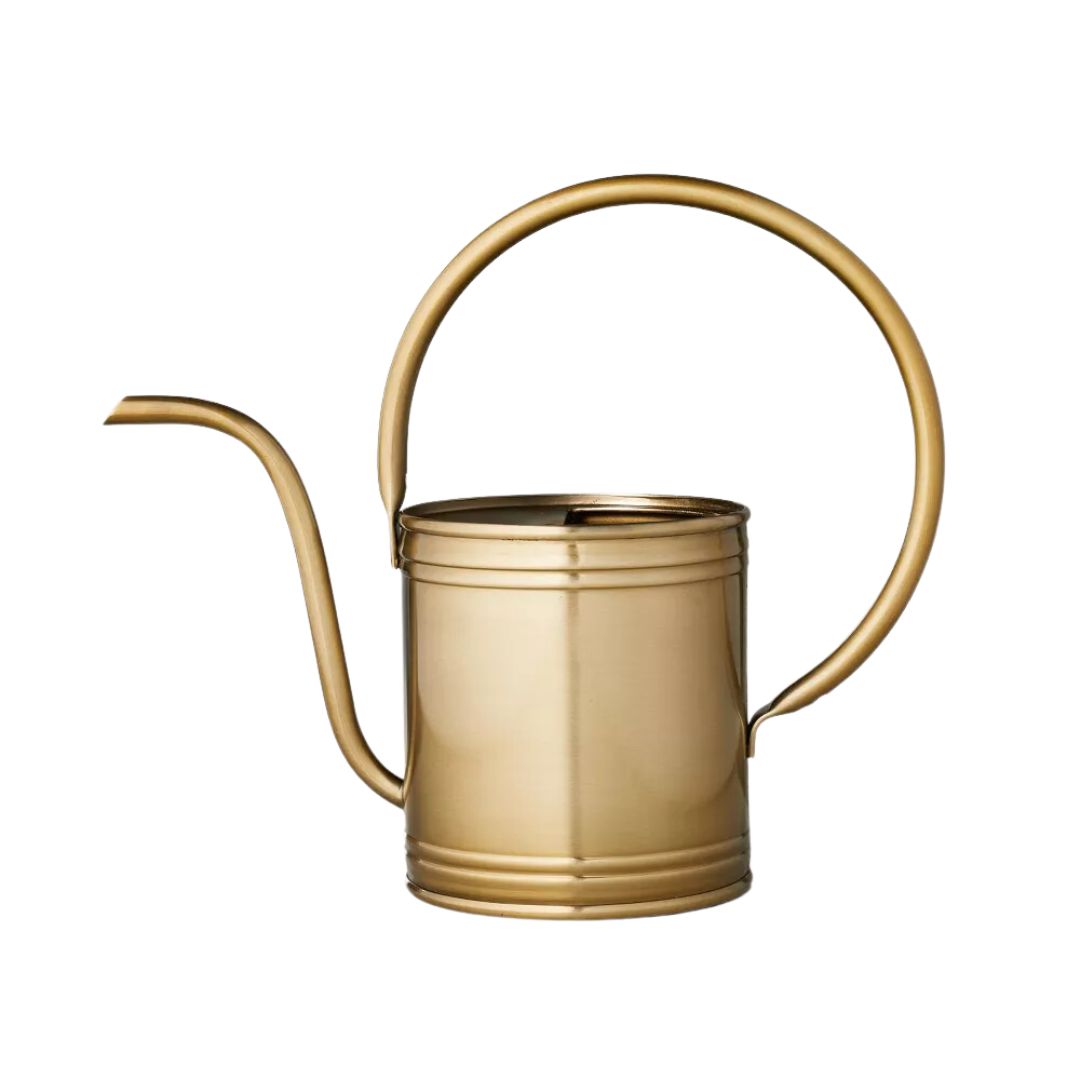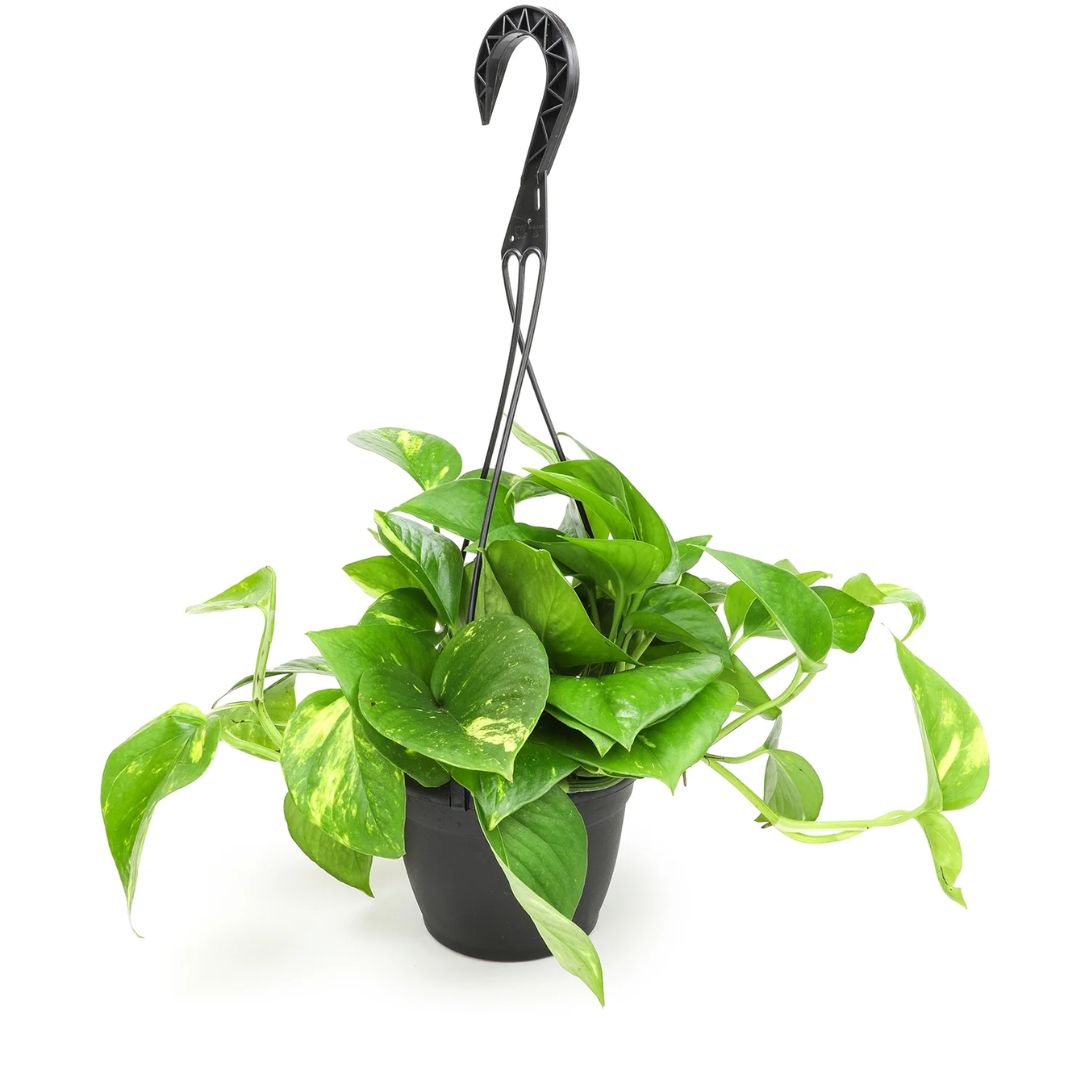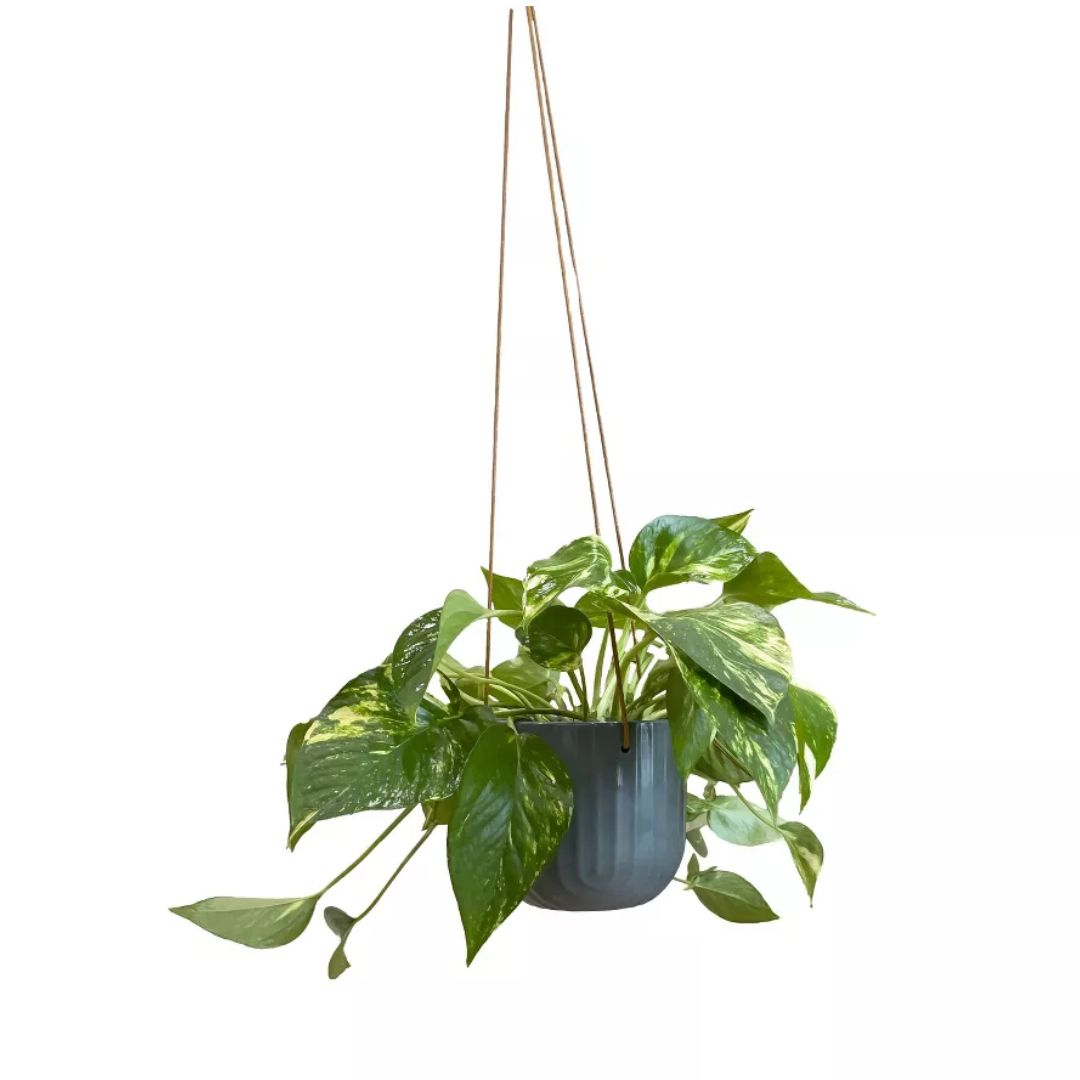Why Are the Leaves on My Pothos Turning Yellow? An Expert Gives Us 9 Potential Reasons
If you're wondering why the leaves on your Pothos are turning yellow then these easy fixes will solve the problem


It's bright and ever-present — the pothos, also known as Epipremnum pinnatum, is truly a remarkable houseplant. Its strong and hardy properties make it tolerable to a range of different growing conditions, but more often than not, this precious plant can go from healthy to not so healthy, rather quickly...
Yellowing leaves on pothos is quite a common and can be a natural occurrence in some plants, but once it starts drooping and looking a little sad, there is a problem that you will need to address. Lisa Eldred Steinkopf, a plant expert from The Houseplant Guru tells us: "Pothos is a great plant for many situations. It will thrive in bright light but can also tolerate low light. If you place a pothos in a low-light situation, though, it will lose its variegation."
The most popular houseplants are those that are easy to care for, but even with low-maintenance blooms, if they're not given any love, care or attention, then they are more prone to withering away. So if you're wondering why the leaves on your pothos are turning yellow — we've spoken to a houseplant expert to answer all of your questions.
Why Are the Leaves on My Pothos Turning Yellow

The question of where to buy houseplants and how to take care of them often goes through a lot of plant parents' minds (at least it does in mine). Once you've homed your beloved plant, taking care of it is the next step. But if you do notice your pothos going through a sad phase and you're wondering why the leaves are suddenly turning yellow, there may be a few reasons.
Here's what houseplant expert, Lisa Eldred Steinkopf, from The Houseplant Guru has to say about it.
Overwatering: These heavenly green plants can become weak and damaged if you overwater them. Overwatering can lead to root rot and develop yellow leaves. To avoid this, Lisa says you need to ensure the pot that it's in has a drainage hole, to allow excess water out. "Use a well-drained potting mix," the expert adds. "Water thoroughly and allow it to dry down an inch or two before watering again." Remember, pothos prefer its soil to be dried out completely before it gets watered.
Too much sun: If you've placed your pothos plant under direct sunlight for too long, you are at risk of burning your plants leaves. Lisa says "though a pothos can live in bright light, it needs to be acclimated if it has been living in a shadier spot." But if you move a plant from a lower light space to a higher light situation, you will need to do it gradually so your plant leaves do not burn. "If your plant is in full sun in a southern window, it may be too much and your leaves will burn," Lisa adds.
The Livingetc newsletters are your inside source for what’s shaping interiors now - and what’s next. Discover trend forecasts, smart style ideas, and curated shopping inspiration that brings design to life. Subscribe today and stay ahead of the curve.
Not enough sun: Too little sun can also cause your plants leaves to turn yellow. If there is not enough light to give your pothos plant energy, it will soon start to droop and discolor. To fix this, move it to a window that gets a good amount of light. These plants need around 4 to 6 hours of bright, indirect sunlight daily.
Inconsistent watering: Do not forget to water your plant once it dries out, as this can also lead to discoloration. Lisa says: "If you forget to water and your plant dries out and then you give it a ton of water and leave water in the saucer, that is inconsistent watering." The expert recommends you keep your plant evenly moist and check on it often. The best time to water your plant would be when the top inch or two of the potting mix is dry. "Empty the saucer after 30 minutes if there is excess water," Lisa adds.

Lisa is The Houseplant Guru, who features all things houseplants on her blog www.thehouseplantguru.com. She grew up in rural mid-Michigan, where being immersed in nature every day nurtured her love for all things outdoors, especially plants. Lisa worked for more than a decade at Steinkopf Nursery and Garden Center as the annuals and houseplants manager.
Insects: You're watering your plant correctly and it's getting enough bright light, but the leaves are still turning yellow? Well, there may just be another reason for that. Lisa suggests you look for mottling on the leaves. She says: "Insects may be there sucking the juices out of the leaves. Look for webbing, and insects or mites. Mealybugs will appear as small pieces of white lint on the plant, but insects are hiding under the 'lint'. Determine what the insects or mites are and treat them accordingly."
Aging: The leaves on your pothos plant may turn yellow as it may just be aging. "Every plant will drop its oldest leaves," Lisa says. "If it is one leaf and the oldest leaf on the stem, it isn’t a problem. Everything is aging." To fix this, Lisa says all you need to do is remove the yellow leaf — you can simply prune this off with a sharp pruning shear.
Temperature: The temperature your pothos is in really does matter. If it's too hot or too cold, this can turn your plants' leaves yellow. Ensure the air temperature is in the middle for a healthy and thriving plant.
Repotting or relocation: If you move your pothos from one location to another, this might just stress your plant out and cause your plants leaves to turn yellow.
Excess Fertilizer: Did you know that adding way too much fertilizer to your lovely pothos can do more harm than good? That's right, if you over fertilize your pothos, you may notice excess fertilizer on the soil's surface as well as discolored, yellow leaves.
Pothos Care Tips

Plant care is essential to get the best out of your beloved greens. There are many home remedies for dying plants that you can follow to keep your natural beauty as healthy as ever. But according to Lisa, the best way to avoid yellowing leaves is to pay attention to your plants!
"The only way to avoid yellowing leaves is to pay attention to the plant and give it the care it needs. Water it thoroughly and let it dry down an inch or two before watering it again," Lisa tells us. "Don’t let it dry out completely or allow it to stand in water."
She continues: "Fertilize monthly with a diluted fertilizer while it is actively growing. A healthy plant that is well cared for will be less likely to develop yellowing leaves and more likely to withstand insect attacks and ward off disease or fungal attacks.
FAQs

Should you remove yellow leaves from a pothos?
The simple answer is, yes! "When they are yellow, it is time to remove them, including the petiole that attaches them to the stem," Lisa says.
Grab your pruning tools and get to pruning! You can do this by cutting vines just above a node — this is where the leaves emerge from. It's as simple as that!
Can yellow pothos leaves turn green again?
Yellow pothos leaves will not turn green again once it has completely transitioned and become discolored. If you do see yellow leaves, you can prune your pothos with the correct pruning tools to bring it back to life.
A Selection of Pretty Pothos

Faiza is the Renovation Editor at Livingetc. She previously worked for The Independent as a News Feature Writer, where she crafted lifestyle, entertainment, and news stories. She also worked as an Audience Editor for the newspaper for almost two years. Thriving in the busy newsroom, Faiza also spent her time crafting stories for Sky News as an SEO reporter, where she produced stories based on trending topics. Lifestyle and interior design have been areas of interest for her for some time, and as she advances in this field, she will continue to refine her skills in all aspects of design. Faiza has a background in SEO, social media, and reporting. Her passion for writing goes beyond her work as she loves all things poetry and creative writing.





